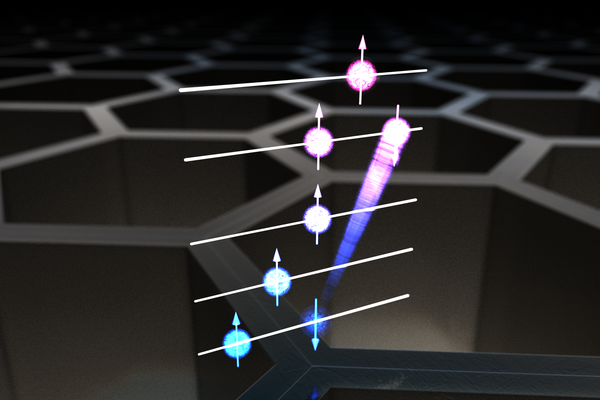Peter Grünberg Colloquium: Prof. Dr. Mirko Cinchetti, TU Dortmund University, Germany
Dr. Daniel Bürgler
Please note: You will receive the link to the online talk in the e-mail invitation, usually sent out a few days before the lecture takes place. It is also available on request from the contact person below.
Coherent THz lattice dynamics coupled to spins in a 2D antiferromagnet: a combined magneto-optical and ARPES study

Two-dimensional (2D) materials have attracted a huge interest from the physics, chemistry and engineering community as extremely promising candidates for future emerging technologies. A prominent example is the demand for miniaturized, ultrahigh-speed electronic devices that currently drives the electronic industry, where van der Waals antiferromagnetic semiconductors could provide systems with intrinsic magnetic stability and THz dynamics, scalable down to the monolayer (2D) limit.
In my talk I will discuss our recent studies on FePS3, that we have chosen as a promising van der Waals antiferromagnetic semiconductor that can be scaled down to the 2D limit without loosing its magnetic order. We have studied this material using two complementary experimental methods. First, we used angle-resolved-photoelectron spectroscopy (ARPES) to characterize the electronic structure in the ground state [1]. Then, we performed pump-probe magneto-optical measurements to access the laser-driven lattice and spin dynamics. When pumping in resonance with a d-d transition of the Fe2+ multiplet, we generated a coherent phonon mode oscillating at 3.2THz. This mode can be excited in a regime of low optical absorption that prevents damage even of single antiferromagnetic layers [2]. The amplitude of this mode decreases as the sample is heated up to the Néel temperature and eventually vanishes as the phase transition to the paramagnetic phase occurs, thus revealing its connection to the long-range magnetic order. In the presence of an external magnetic field, the optically triggered 3.2 THz phonon hybridizes with a magnon mode, which we utilized to excite the hybridized phonon-magnon mode optically. I will compare the ARPES to the magneto-optical data to rationalize these findings and discuss the possibility to scale down our results to the two-dimensional limit.
[1] J.E. Nitschke, et al. Materials Today Electronics 6, 100061 (2023) https://doi.org/10.1016/j.mtelec.2023.100061
[2] F. Mertens, et al. Advanced Materials (2023) https://doi.org/10.1002/adma.202208355
